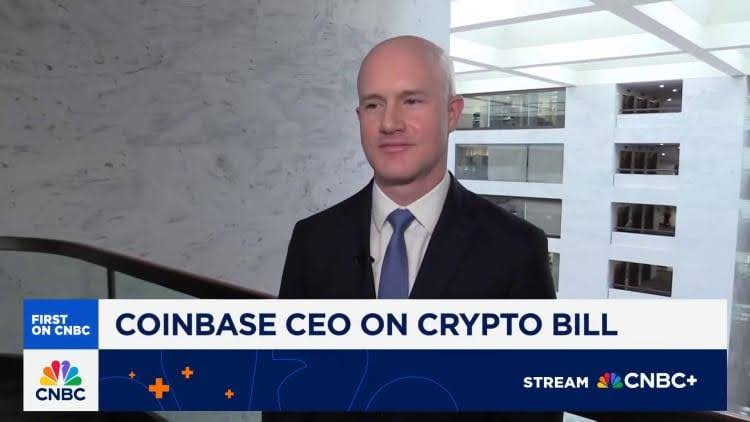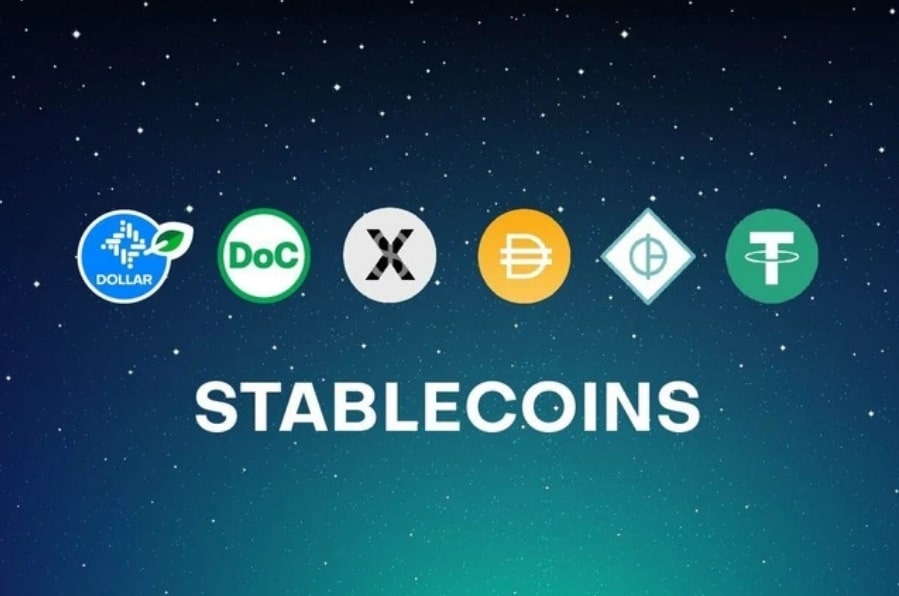Key Takeaways:
- Coinbase CEO says Fortune 500 companies are actively preparing to integrate stablecoin payments.
- Stablecoins are emerging as a new revenue engine for Coinbase, alongside trading and subscriptions.
- Shopify, Amazon, Walmart, and others are already experimenting with blockchain-based payment rails.
Stablecoins are about to go mainstream and not just among crypto natives. According to Coinbase CEO Brian Armstrong, some of the largest companies in the world are moving toward stablecoin adoption, positioning the U.S. dollar-backed digital assets as a future default for global payments.
This isn’t a vague forecast. It’s already starting.

Coinbase Sees Surge in Corporate Demand for Stablecoins
Coinbase’s CEO, speaking to CNBC’s Closing Bell Overtime, confirmed that several Fortune 500 firms are entering the stablecoin space. While some have made public announcements, others are quietly piloting blockchain-based payment infrastructure behind the scenes.
“We’re going to see the Fortune 500 really start to adopt stablecoins,” Armstrong said. “We’ve already seen it start.”
He specifically cited Coinbase’s new integration with Shopify, allowing merchants to accept payments in stablecoins via Coinbase’s wallet and payment API tools. Armstrong hinted that Walmart, Amazon, and other giants are evaluating similar pathways for stablecoin adoption, either for payments, settlements, or treasury management.
This shift, if fully realized, would represent a multi-trillion-dollar market opportunity, considering the combined revenue of the Fortune 500 exceeded $18 trillion in 2024.
Stablecoin Payments, From Crypto Niche to Global Infrastructure
Stablecoins have long been used within the crypto ecosystem for trading, hedging, and DeFi operations. Now, their real-world use cases are beginning to take shape on a global level.
What’s driving this adoption?
- Cross-border efficiency: Stablecoins can move globally in seconds, eliminating slow SWIFT wires and high remittance fees.
- Dollar demand abroad: In high-inflation economies like Argentina, Nigeria, or Turkey, stablecoins offer digital access to the U.S. dollar.
- Financial inclusion: All users need is a smartphone to access stable-value digital dollars, no bank account required.
Armstrong sees stablecoins as crypto’s first “daily-use” application with real-world traction.
“This is a daily use case for crypto,” Armstrong said. “Millions of people around the world can use stablecoins for payments, especially in places with unstable local currencies.”
Read More: Coinbase Reinforces Onchain Ambitions with Opyn’s DeFi Derivatives Pioneers
Stablecoins as Coinbase’s Next Revenue Engine
Coinbase’s business model has historically centered on trading fees. More recently, subscriptions and services have grown, making up a substantial share of quarterly revenue. Now, Armstrong sees stablecoin payments as a third core pillar.
With millions of daily users already utilizing stablecoins in peer-to-peer and cross-border payments, Coinbase is building out wallet services, on-ramps, and APIs for both retail and enterprise clients.
Armstrong described this as a TAM expansion (Total Addressable Market) that could diversify Coinbase’s earnings and reduce reliance on volatile crypto market cycles.
“Payments is the next big category,” he noted. “And it’s not tied to trading volatility.”
Coinbase’s payment APIs could become a financial backend for global commerce, enabling any business to accept stablecoin payments in real time, with near-zero fees.
Read More: Coinbase CEO’s Crypto Regulatory Meetup in London, What’s Up Next?


Institutional-Grade Infrastructure Unlocks Mass Adoption
The rise in corporate interest comes at a time when U.S. regulators are finally providing a legal framework for stablecoins.
The GENIUS Act, recently passed by the U.S. House of Representatives, aims to regulate stablecoin issuers, requiring full backing by cash or short-term Treasuries and monthly transparency reports.
This legal clarity could encourage more companies to integrate stablecoins without regulatory hesitation.
Coinbase, as a publicly traded and licensed entity, is well-positioned to provide compliant stablecoin services. Its collaboration with Shopify marks the beginning of a broader shift where crypto infrastructure blends directly into traditional retail platforms.
If stablecoin payments are integrated into platforms like Amazon, Walmart, or Uber, it could reduce merchant fees from ~3% (charged by Visa and Mastercard) to under 0.5%, while settling in real time. That alone could save billions annually in payment processing costs.
What This Means for the Crypto Market
The growing interest from corporate America in stablecoins has wide-reaching implications:
- Legitimization: Big brand adoption reduces consumer skepticism and normalizes blockchain usage.
- Infrastructure expansion: More demand for wallet apps, API providers, custodians, and cross-chain solutions.
- Token utility growth: Stablecoins like USDC and USDT gain more utility, increasing on-chain liquidity and volume.
More importantly, it creates a use case that isn’t speculative. Unlike trading, stablecoin payments provide a sticky, recurring use case that can scale far beyond current crypto-native audiences.
Coinbase’s strategy to lean into this space puts it ahead of competitors, especially in the U.S., where regulatory clarity and enterprise demand are aligning for the first time.












